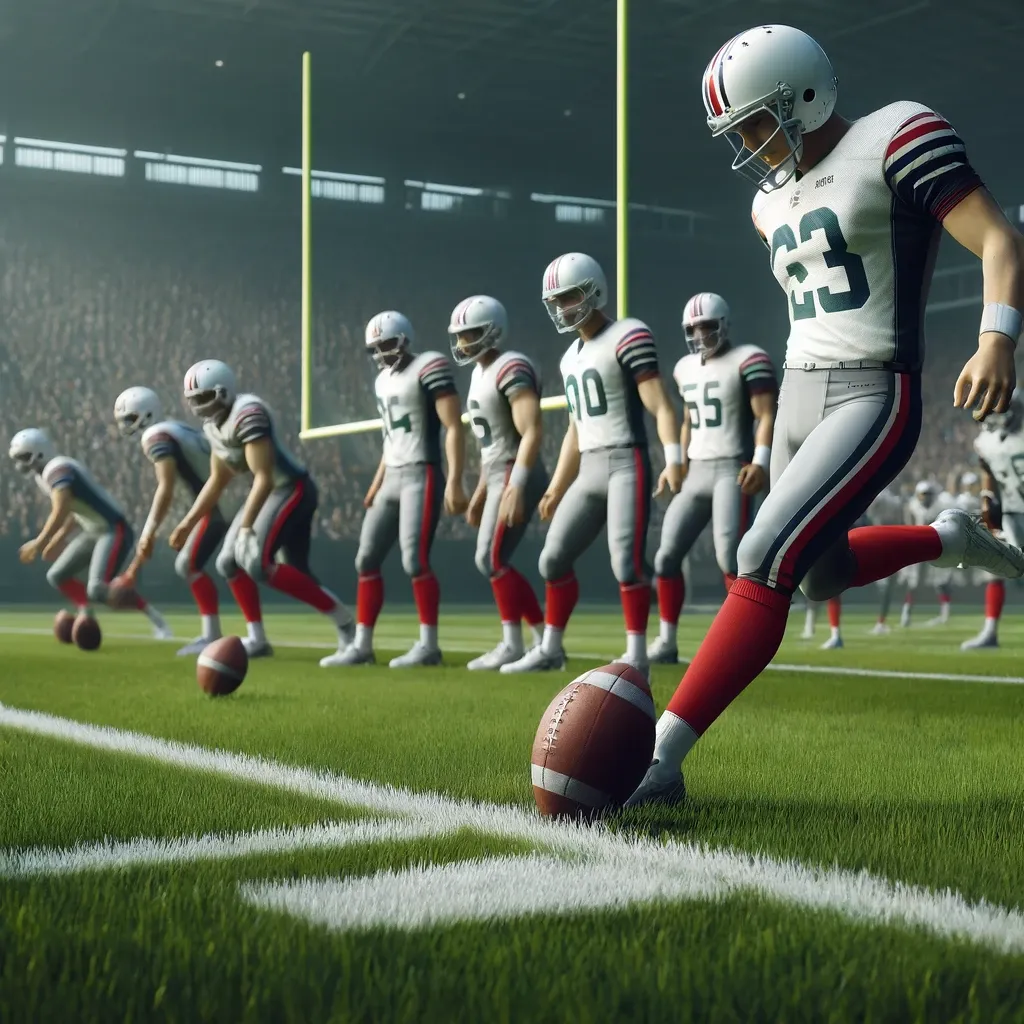Have you ever wondered why football is the most popular sport in the UK? Why do some players excel in specific positions? Are you aware of the standard football field size and how it impacts the game? If these questions pique your interest, you’re in the right place. Understanding the fundamentals of football, from the size of the field to the roles of each player, is crucial not just for players, but for fans too. Let’s dive into these key aspects that will enhance your appreciation of the game.
Football Field Size: The Foundation of the Game
The size of a football field is more than just a measurement; it’s the canvas where the beautiful game unfolds. The standard football field size in the UK is 100 to 110 meters in length and 64 to 75 meters in width. This range allows for a balance between offensive and defensive play, giving each team ample space to maneuver.Imagine watching a match where the field is too small—players would be cramped, and the game would lose its strategic depth. Conversely, a field that’s too large would exhaust players and reduce the intensity of the game. The standard size strikes a perfect balance, ensuring that both skill and strategy play pivotal roles in the outcome.
- The length of the field determines the distance players must cover, which influences the pacing of the game.
- The width allows for tactical plays such as wide crosses, spreading the defense thin, and creating scoring opportunities.
- Goalposts are strategically placed 7.32 meters apart, a width that challenges even the best goalkeepers.
- Penalty areas and goal areas are carefully sized to ensure fair play, giving attackers a legitimate chance to score while providing defenders a fair opportunity to prevent goals.
- Corner arcs mark the precise spots for corner kicks, crucial for set-piece strategies.
- Centre circle is exactly 9.15 meters in radius, ensuring a standard starting point for the game.
- The pitch’s gradient ensures proper drainage, preventing waterlogging and maintaining playability.
- Turf quality varies, with natural grass and artificial turf offering different play experiences.
- Field lighting is standardized to ensure clear visibility during night matches, which is essential for both players and spectators.
- Sidelines and goal lines are painted with precision to ensure fair play and correct decision-making during close calls.
Understanding the specifics of the football field’s size can significantly enhance your appreciation of the game, making you a more informed fan or player.
Football Positions in the Field: The Key to Team Success
Football is a team sport, and each player’s position on the field is crucial for the team’s overall success. From the goalkeeper to the forwards, every position has its own set of responsibilities and skill requirements. Knowing these positions can give you a deeper understanding of the game.The goalkeeper is the last line of defense and the only player allowed to use their hands within the penalty area. A good goalkeeper not only stops shots but also commands the defense, organizing players to prevent scoring opportunities.Defenders, including center-backs and full-backs, are tasked with stopping the opposition’s attacks. They need to be strong, fast, and excellent in tackling. A center-back must excel in aerial duels, while full-backs often participate in both defense and attack, requiring speed and stamina.Midfielders are the engine of the team, controlling the flow of the game. They connect the defense and the attack, making them crucial for both offensive and defensive play. Midfielders need to be versatile, with the ability to tackle, pass accurately, and even score goals.Forwards are primarily responsible for scoring goals. This position includes strikers and wingers. Strikers are positioned closest to the opponent’s goal and must have excellent finishing skills, while wingers use their speed and dribbling ability to create scoring opportunities from the flanks.Each position on the football field requires a specific set of skills and attributes. Understanding these can help you appreciate the complexity of the game and the strategy behind each match.
Football Is Coming: The Future of the Sport
Football has always been more than just a game; it’s a global phenomenon. In the UK, football is deeply ingrained in the culture, with clubs like Manchester United, Liverpool, and Arsenal boasting millions of fans worldwide. But what does the future hold for this beloved sport?The phrase “Football is coming” symbolizes the ongoing evolution of the game. With advancements in technology, such as VAR (Video Assistant Referee), the sport is becoming more precise and fair. This technology has been controversial but undeniably impacts the game by reducing errors.Moreover, the training methods are evolving. Players today have access to state-of-the-art facilities and data-driven training programs that enhance their performance on the field. Clubs invest heavily in youth academies, ensuring a continuous supply of talented players.The fan experience is also changing. Virtual reality and augmented reality are bringing fans closer to the action, allowing them to experience matches like never before. Whether you’re in the stadium or at home, the way you experience football is transforming.Sustainability is another key area where football is progressing. Stadiums are being built with eco-friendly materials, and clubs are committing to reducing their carbon footprints. This shift is crucial as the sport takes responsibility for its environmental impact.Lastly, the global reach of football continues to expand. Leagues in Asia and America are growing rapidly, and the sport is becoming more inclusive, with women’s football gaining more recognition and support.The future of football is bright, and as the sport continues to evolve, so too will the passion and excitement it brings to millions around the world.Football in the field is more than just a sport; it’s a global phenomenon that unites people from all walks of life. Understanding the intricacies of the football field size, the importance of each position, and the future direction of the sport can deepen your appreciation and enjoyment of the game. As Pele once said, “Success is no accident. It is hard work, perseverance, learning, studying, sacrifice and most of all, love of what you are doing.” Whether you’re a player, coach, or fan, the love for football drives us all to understand and enjoy this beautiful game more deeply.






